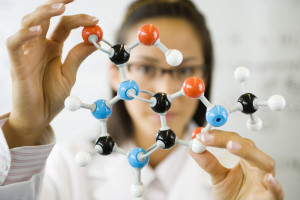Beach, barbeque and… beta cells?

 Summer is a time to relax and renew—but at JDRF, innovation never takes a vacation. Over the last few weeks, our Industry Discovery and Development Partnership (IDDP) team has finalized deals with five new industry partners to help us accelerate the delivery of life-changing breakthroughs to cure, prevent and treat type 1 diabetes (T1D). The IDDP enables JDRF to tap into the intellectual and financial resources of private entities working in the T1D space to help move therapies to market more quickly. At the front end, early JDRF investments in promising therapies can make them less risky for industry partners to pursue, and in later stages, the partners’ expertise in pushing products through the development pipeline and the regulatory approval process speeds their delivery to the T1D community. The therapies and devices at the heart of these partnerships are a direct result of more than 40 years of investment and agenda-setting on the part of JDRF, the world’s leading charitable funder of T1D research.
Summer is a time to relax and renew—but at JDRF, innovation never takes a vacation. Over the last few weeks, our Industry Discovery and Development Partnership (IDDP) team has finalized deals with five new industry partners to help us accelerate the delivery of life-changing breakthroughs to cure, prevent and treat type 1 diabetes (T1D). The IDDP enables JDRF to tap into the intellectual and financial resources of private entities working in the T1D space to help move therapies to market more quickly. At the front end, early JDRF investments in promising therapies can make them less risky for industry partners to pursue, and in later stages, the partners’ expertise in pushing products through the development pipeline and the regulatory approval process speeds their delivery to the T1D community. The therapies and devices at the heart of these partnerships are a direct result of more than 40 years of investment and agenda-setting on the part of JDRF, the world’s leading charitable funder of T1D research.
Easing the Daily Burden
Two of the partnerships focus on beta cell replacement. The first, with French company Defymed, will help finance pre-clinical testing of its MAILPAN® beta cell encapsulation device. The two-year trial is designed to demonstrate MAILPAN’s safety, effectiveness and its ability to protect insulin-secreting cells from autoimmune attacks without the use of immunosuppressive drugs. The MAILPAN device is refillable, so the amount of beta cells within can be adjusted with a simple injection. The second partnership is with Canadian therapeutic cell transplant specialist Sernova, funding a clinical trial of its novel Cell Pouch™ system. The results of these trials will help move these devices through the regulatory approval process and to the U.S. marketplace.
Delivering Insulin Better
Two other partnerships are funding work to build better insulin infusion sets. Current infusion sets can be uncomfortable and unreliable and need to be changed every two to three days. JDRF is working with our new partners to improve their performance and the overall user experience. Capillary Biomedical, Inc. of Irvine, CA—in collaboration with the Sidney Kimmel Medical College of Thomas Jefferson University—is working on a device that will diffuse insulin more efficiently and reliably and will only need to be changed once a week.
Our partnership with Oregon-based Pacific Diabetes Technologies will help the startup develop and test its all-in-one continuous glucose monitoring (CGM) sensor and infusion set. The device will eliminate the need for pump users to stick themselves twice—once to insert their CGM sensors, and again to insert their infusion catheters—improving the performance of both functions and making insulin dosing more accurate and comfortable.
Reliable, efficient, comfortable glucose monitors and infusion sets greatly improve glucose control and will be vital to widespread adoption of artificial pancreas systems, of which they are key components. Finally, our new partnership with Arecor, Ltd. will help advance development of a rapid-acting, ultra-concentrated insulin. JDRF funding will underwrite pre-clinical testing of the insulin designed to be used at mealtimes to prevent blood sugar spikes.
Arecor’s insulin administered through a pump will allow people with T1D to significantly reduce their dosing volume. The insulin will be contained in much smaller capsules than are used now, meaning future pumps can be built smaller.
What’s Next
Even as it finalizes these new partnerships, JDRF is putting the finishing touches on three more, two in the area of beta cell restoration and the third focused on infusion set optimization. Visit our blog to find out more about the promising therapies moving out of the laboratory into the commercial pipeline thanks to the collaboration between JDRF and our remarkable network of industry partners.
Why it Matters
Partnerships like these allow JDRF to leverage its resources, tapping into the expertise and assets of industry stakeholders to fuel innovation and develop better therapies to help people with T1D stay healthy while we work toward a cure.